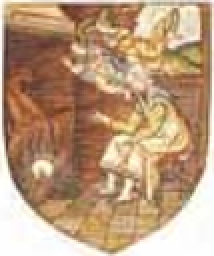Travel Reference
In-Depth Information
Left
The Arrival of Napoleon at Dam Square
Right
German wartime propaganda poster
Moments in Amsterdam's History
c.1125: First Settlers
Fishermen settled at the
mouth of the Amstel river, build-
ing huts on man-made mounds
called
terps
for flood protection.
With the growth of the new
settlement came feudal conflict
between the self-made Counts
of Holland and Lords van Amstel.
religious artifacts. The city finally
became Protestant, in a peaceful
revolution known as the
Alteratie
or Alteration
(see p21)
.
1609: Plans for the
Grachtengordel
The dawn of the Golden Age,
when the arts flourished in
Amsterdam
(see p27)
, saw
ambitious plans for a triple canal
ring around the city
(see p11)
.
Herengracht, Keizersgracht and
Prinsengracht were built in two
stages, starting in 1613 and 1663.
1275: Freedom from Tolls
In the earliest document to
refer to Amsterdam, Count Floris
V of Holland granted its citizens
exemption from tolls when
transporting their goods by river
across his territory
at The Hague.
1634-37:
Tulipmania
The Dutch passion for
tulips dates from the
late 16th century, when
the first bulbs were
imported from Asia.
In 1634, the tulip was
quoted on the Stock Ex-
change, and speculation
began. Fortunes were made
overnight as the craze
led to spectacular price
increases; the inevitable crash
caused scores of bankruptcies.
1345: Miracle
of Amsterdam
At a house in Kalver-
straat, a priest gave
a dying man the last
sacraments. He was
unable to keep down
the communion wafer, so
it was thrown on the
fire. Next morning, the
wafer was found intact among
the embers. News of the miracle
spread, and Amsterdam soon
became a place of pilgrimage.
Miracle of Amsterdam
1806: Kingdom of the
Netherlands Established
After the formation of the
Batavian Republic in 1795, rule
was shared between the invading
French and the Dutch Patriots. In
1806, Napoleon Bonaparte took
over the Republic, created the
Kingdom of the Netherlands and
installed his brother, Louis
Napoleon, as head of state.
1566 and 1578:
Iconoclasm and Alteration
As Protestantism swept northern
Europe, Dutch Calvinists rebelled
against their intolerant Spanish
Catholic ruler, Philip II. In the
Beeldenstorm
or Iconoclasm, the
Calvinists stormed the Catholic
churches and destroyed their
38

















